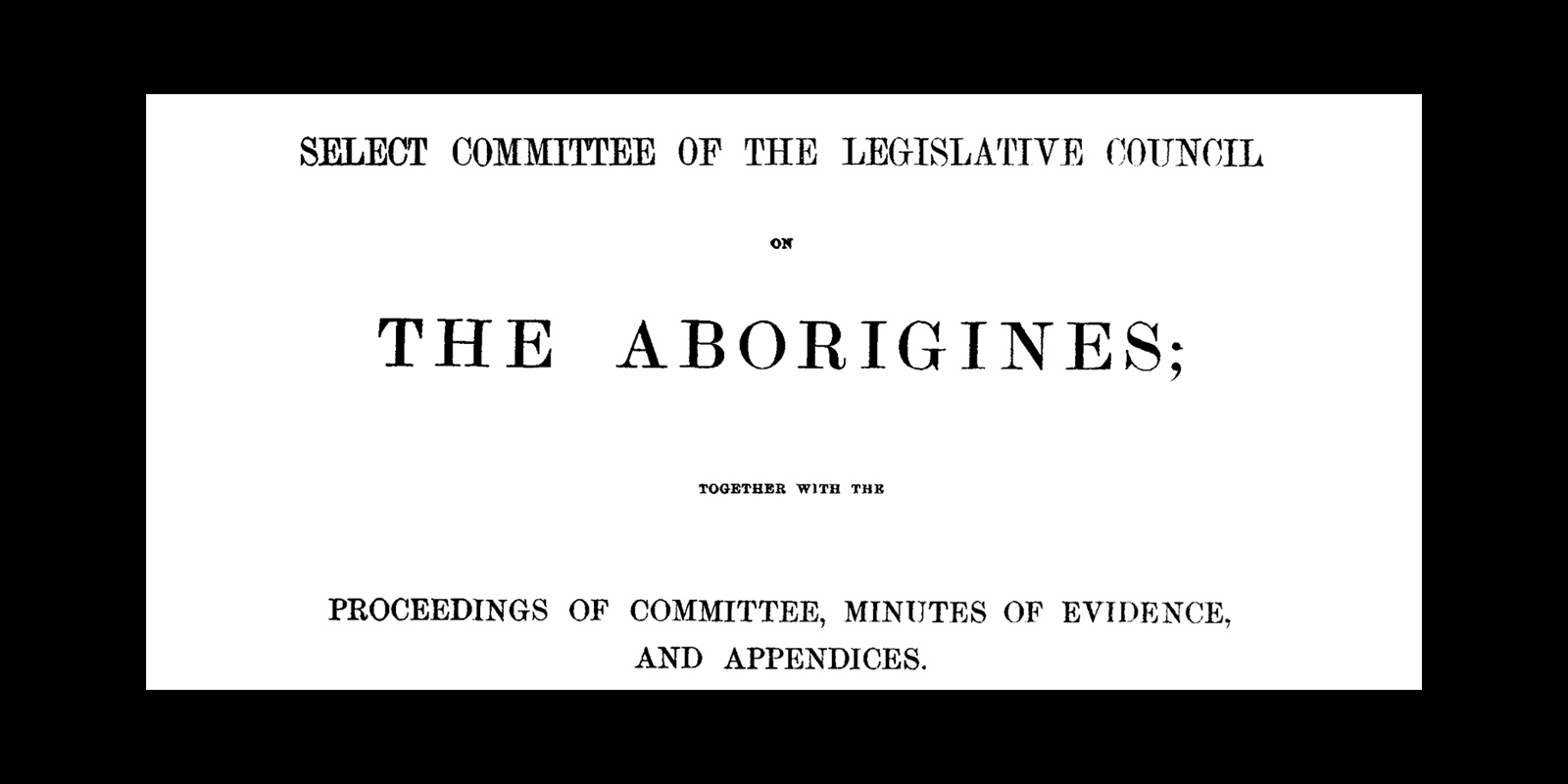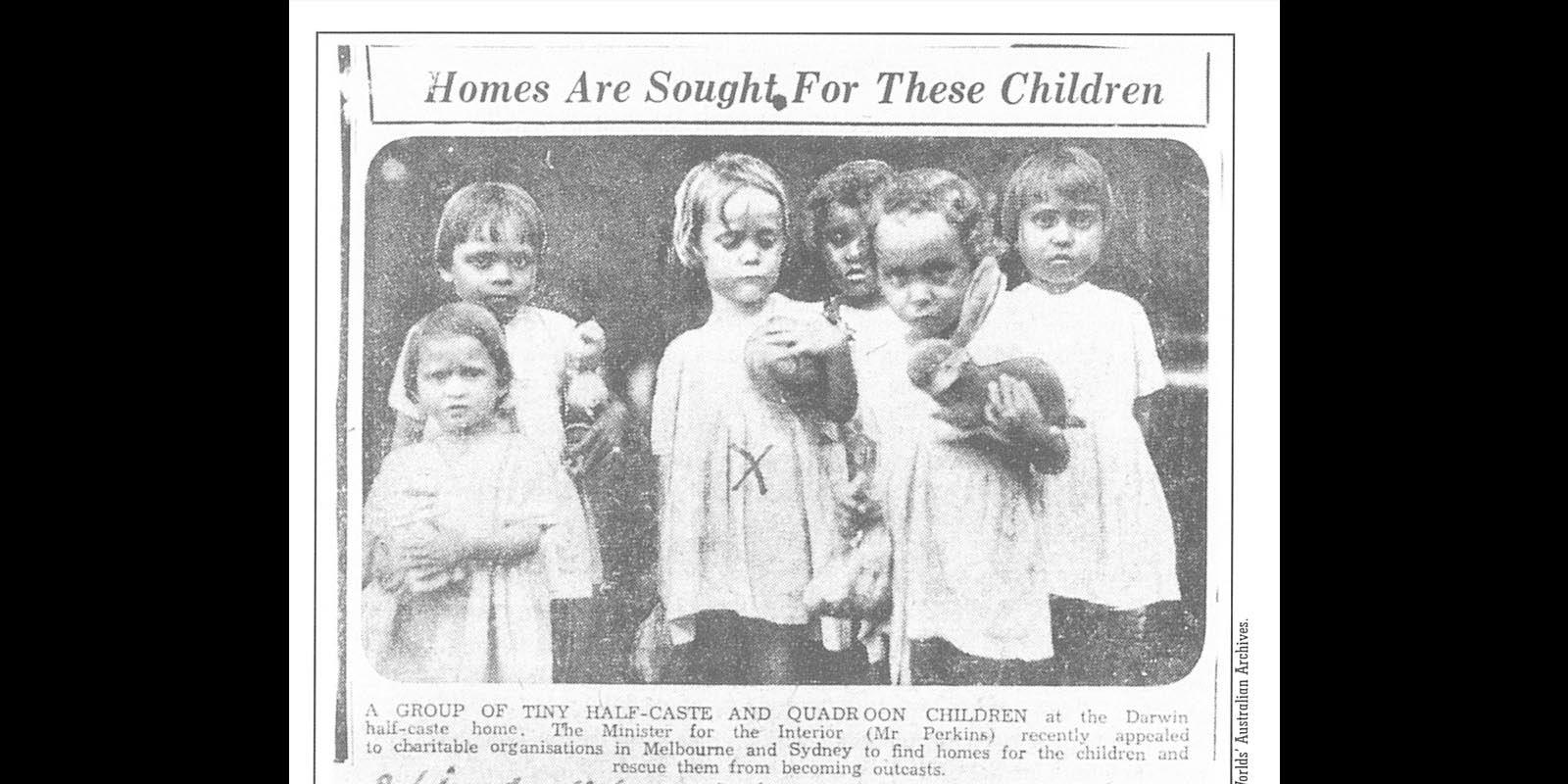This article looks at the ‘protection’ policies implemented between the 1860’s to the late 1900’s.
These policies use outdated and derogatory language and beliefs/theories like ‘half-caste’ or ‘assimilation’. These words and beliefs are highly offensive, however please note they are mentioned throughout this article in order to explain and understand the past and how it affects the present.
A History of Protection
An inquiry into the welfare of the Aboriginal population was undertaken by the Select Committee of the Legislative Council on the Aborigines in 1858 and in 1860 they released their findings in a report.
The report recommended the creation of reserves and missions for Aboriginal people to live on as well as the creation of a board to watch over and regulate the lives of Aboriginal people.
The government soon established the Central Board Appointed to Watch over the Interests of Aborigines and was later given statutory authority after the Aborigines Protection Act 1869 passed.


The Legislation
The following legislation had a major impact on the lives of Aboriginal people in Victoria. Community lost what little autonomy they had and were forced into becoming objects that people could dictate rather than people with rights. These acts caused huge suffering and pain that continues to effect community today.
Aboriginal Protection Act 1869 (Vic) (transcript)
Long title ‘An Act to provide for the Protection and Management of the Aboriginal Natives of Victoria’.
The Aboriginal Protection Act 1869 made Victoria the first colony to create an act that allowed the government to totally regulate the lives of Aboriginal people. This act re-established the Board as the Central Board for the Protection of Aborigines and gave them an extreme amount of control which allowed them to dictate many aspects of the lives of Aboriginal people such as where they could live and work, who they could marry and when they were allowed to go to the local towns.
This act also gave the definition of an ‘Aboriginal’ as;
“Every aboriginal native of Australia and every aboriginal half-caste or child of a half-caste, such half-caste or child habitually associating and living with aboriginals, shall be deemed to be an aboriginal within the meaning of this Act…”
This meant there was a very broad definition for Aboriginality, and anyone deemed to fit within the definition would have their lives regulated by the Board.
The Aborigines Protection Act 1886 (transcript)
The Aborigines Protection Act 1886 was an amendment on the Aborigines Protection Act 1869. The Act changed the definition of ‘Aboriginal’ to exclude those who were ‘half-caste’ (only one parent was Aboriginal). This began the policy of forcing those who were ‘half-caste’ off the missions and stations which is what led to many of them being shut down.
Many of those who were removed from the mission were children who were forcibly taken from their families. It was believed that by taking the children and placing them in white families or institutions they could be provided better lives. Government officials held racist beliefs that Aboriginal parents were automatically unfit to take care of their children. Many of these children were forced to work as domestic servants for the families they lived with.
Those removed also no longer received any assistance from the Board or the government as they were seen to be functioning members of the white society. This was problematic as the colonists refused to accept them as part of the community due to them still being considered Aboriginal on a non-official level.
The act also allowed the Governor to appoint ‘Protectors of Aborigines’. The duty of these ‘protectors’ was to carry out the requests of the Board and act on behalf of the Aboriginal people they were ‘protecting’.
Aborigines Act 1910 (transcript)
Long title ‘An Act to extend the powers of the Board for the Protection of the Aborigines’.
This Act was initiated by John Murray, a grazier from the Western District. He was State Premier and Chief Secretary, in this role he chaired the Board for the Protection of Aborigines. He was critical of the Boards inhumane treatment of Aboriginal people and believed that assistance be given to Aboriginal people outside the reserves.
The Aborigines Act 1910 re-established those who were half-caste as Aboriginal again granting them assistance those on the missions and reserves received. This did not, however, stop the removal of children from their families and communities.


Image: Newspaper article asking for a home for the removed children, National Archives of Australia.
The Stolen Generation
The previous legislation cemented the belief that government should and could control the lives of aboriginal people and paved the way for the Stolen Generation to occur.
The ‘Stolen Generations’ refers to Aboriginal or Torres Strait Islander people who were forcibly removed as children from their family, community, culture and country.
These children were removed or taken under government laws that sought to 'assimilate' them or raise them to be the same as white people and deny their culture. They were not allowed to practice their culture or speak their language and often were not allowed to see their family.
Many children were removed to institutions such as children’s homes or orphanages or were fostered to non-Aboriginal families. They were frequently prevented from contacting their families or staying connected with community and culture.
Bringing them Home and the Apology
In 1995 the Federal Attorney-General launched the National Inquiry into the Separation of Aboriginal and Torres Strait Islander Children from Their Families. This Inquiry was conducted by the Human Rights and Equal Opportunity Commission (HREOC) and aimed to
“Trace and report on past laws, practises and policies that resulted in the separation of Aboriginal and Torres Strait Islander children from their families and the effects of those laws, practises and policies.”
In April 1997, the Commission handed down the report – Bringing them Home: Report of the National Inquiry into the Separation of Aboriginal and Torres Strait Islander Children from Their Families. The report contained 54 recommendations about how to address and heal the effects of the forced removals and the laws and policies of previous governments on Aboriginal and Torres Strait Islander peoples. The report was also the first time that the Stolen Generations had been acknowledged officially by a national inquiry.
The Prime Minister at the time of the release of the Bringing them Home report, John Howard, had consistently refused to make an apology to the Stolen Generations. Following his election win in 2007, Prime Minister Kevin Rudd committed to making the apology in his first year in office. This occurred in the Australian Parliament in Canberra on 13 February 2008.
To read more about the inquiry, the Bringing Them Home Report and the national apology you can head to our timeline entries on the Inquiry to recognise the Stolen Generations and the Apology to the Stolen Generations.
